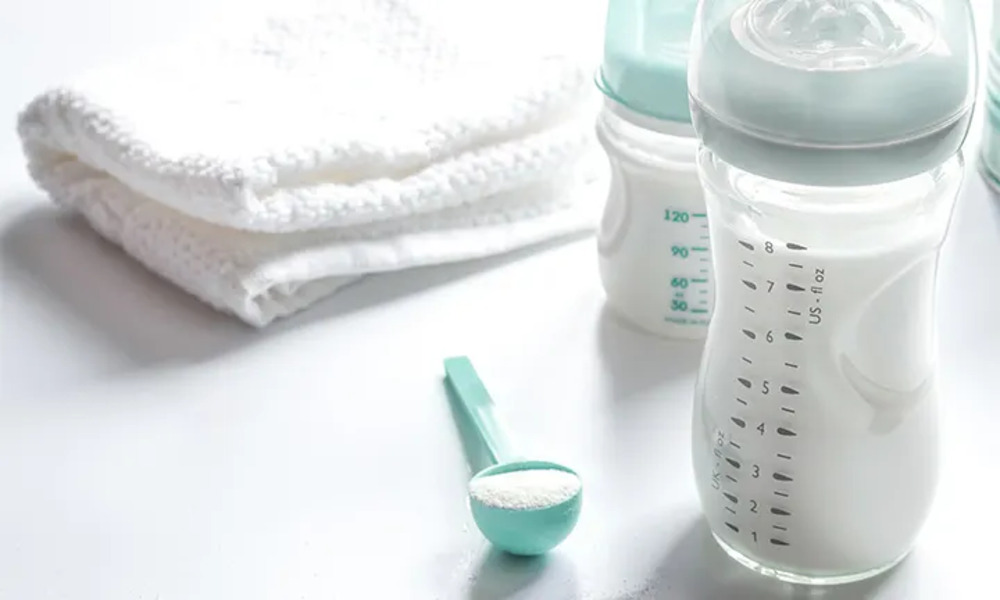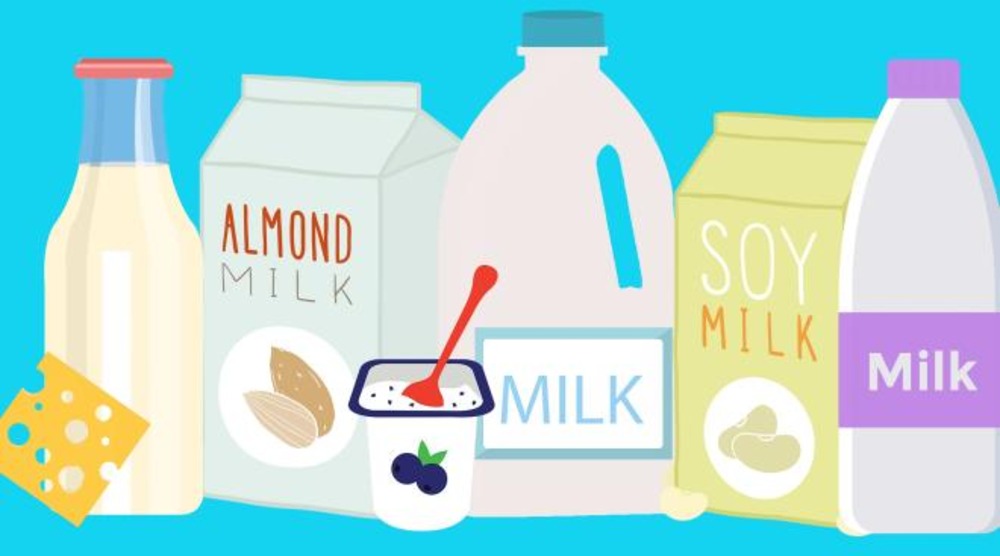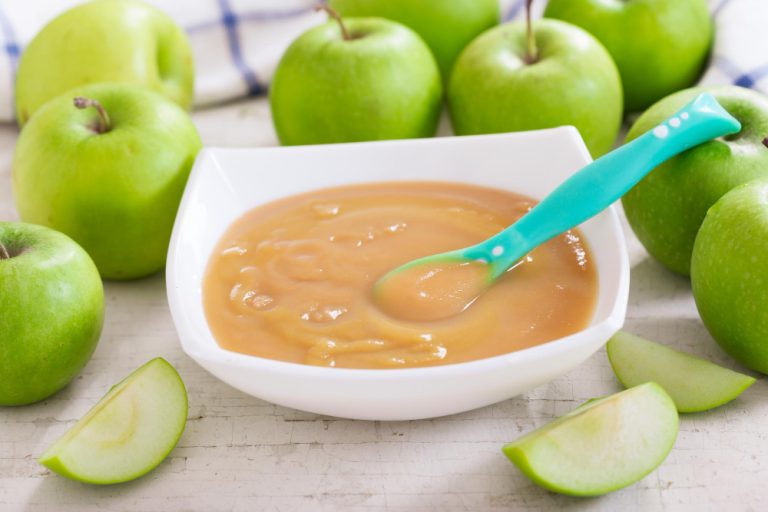How Long Do Babies Drink Formula Before Progressing To Milk?
Are you ready to take the next step in your baby’s feeding journey? Transitioning from formula to milk is a significant milestone that can be both exciting and challenging for parents. One common question parents have is, “How long do babies drink formula?”
It’s a valid concern, and understanding when and how to make this transition can help ensure your baby’s nutritional needs are met during this important stage of development.
Understanding when and how to make this transition smooth and successful is crucial for your baby’s development. This blog is your comprehensive guide to navigating this important change with confidence and expertise.
Discover how long do babies drink formula and the optimal time to switch from formula to milk, expert tips for a seamless transition, and recommendations for the best milk options for your growing 1-year-old. From cow’s milk to milk alternatives, we’ve got you covered every step of the way.
Ready to make the switch? Let’s ensure your baby’s feeding journey continues on the right path.
Baby Steps: Tips to Transition From Formula to Milk

Making the transition from formula to milk is an important milestone in your baby’s development. This guide will provide you with expert tips and step-by-step instructions to ensure a smooth and successful transition.
Transitioning your baby from formula to milk is not just a matter of switching out one bottle for another. It requires a gradual process that takes into account your baby’s readiness and nutritional needs.
By following these tips, you can help make the transition as seamless as possible:
Start at the Right Time
- The American Academy of Pediatrics recommends introducing cow’s milk to babies around their first birthday.
- However, every baby is different, and it’s important to look for signs of readiness, such as the ability to sit up unsupported and an interest in solid foods.
- Consult with your pediatrician to determine the best time for your little one.
Mix Milk with Formula
- To ease the transition, start by mixing a small amount of milk with your baby’s formula.
- Gradually increase the ratio over a few weeks.
- This will help your baby’s digestive system adjust to the new milk.
Adjust Bottle Sizes
- As you introduce milk, it’s also a good time to transition from bottles to cups.
- Begin by offering small amounts of milk in a sippy cup or a straw cup.
- Gradually decrease the size and frequency of bottle feedings while increasing milk intake from the cup.
Stay Patient and Flexible
- Some babies may take to milk easily, while others may need more time and encouragement.
- Be patient and flexible, and trust your baby’s cues.
- Offer milk at meal times and keep offering breast milk or formula as needed to ensure your baby receives adequate nutrition during the transition.
Remember, the transition from formula to milk is a gradual process that requires patience and understanding. By following these tips, you can help make the transition smoother and ensure your baby is getting the nutrition it needs. Next, we will discuss what to do if your baby seems to prefer formula.
When to Wean Your Baby Off Formula: Signs and Tips for a Smooth Transition

As your baby approaches their first birthday, you may start wondering when to wean them off formula and introduce milk into their diet. The American Academy of Pediatrics (AAP) recommends that babies transition from formula to milk at around 12 months of age, but it’s important also to consider their individual readiness signs.
One of the main indicators that your baby is ready to start transitioning is their ability to consume solid foods and a varied diet. By the time they reach one year, most babies have developed the necessary digestive capabilities to handle cow’s milk.
Keep an eye out for other signs as well, such as:
1. Weight gain
- Ensure that your baby is steadily gaining weight and reaching appropriate growth milestones.
- A consistent upward trend in weight indicates that their nutritional needs are being met.
2. Good overall health
- It may be a good time to start the transition if your child is generally healthy and has no ongoing health issues or concerns.
3. Drinking from a cup
- Encourage your baby to drink from a cup rather than a bottle.
- This milestone indicates their ability to handle different textures and can make the transition smoother.
When you’re ready to begin the transition, keep in mind that it should be a gradual process. Start by replacing one bottle feeding with a cup of milk, preferably whole milk. Over the course of a few weeks, gradually increase the ratio of milk to formula until your baby is exclusively drinking milk.
Remember to consult with your pediatrician before making any significant changes to your baby’s diet. They can provide personalized guidance based on your little one’s specific needs and health status.
Making the switch from formula to milk can be an exciting milestone for both you and your baby. By following these tips and considering your baby’s readiness signs, you can ensure a smooth and successful transition that supports their growth and development.
Sources
- American Academy of Pediatrics (AAP)
- Mayo Clinic
Changing from Formula to Milk: How Long Do Babies Drink Formula

Transitioning your baby from formula to milk is an important milestone in their development. It’s a gradual process that requires careful planning and patience.
Here are some step-by-step instructions to make the transition smooth and successful:
1. Introduce milk gradually
- Start by mixing small amounts of milk with formula in your baby’s bottle.
- Begin with a ratio of 25% milk and 75% formula, and gradually increase the amount of milk over time.
- This helps your baby get used to the taste and texture of milk.
2. Adjust bottle sizes
- As your baby becomes more comfortable with milk, you can start decreasing the size of the formula bottles.
- Gradually reduce the volume of formula in each bottle while increasing the milk content.
- This will help your baby gradually transition to drinking milk instead of formula.
3. Transition to cups
- Around the age of 1, you can start introducing sippy cups or straw cups to replace the bottle.
- Offer milk in these cups during meal times or as a snack.
- This encourages independent drinking and helps your baby make the association between milk and cups.
4. Offer milk as a main drink
- Once your baby is comfortable drinking milk from cups, you can start offering milk as the main drink throughout the day.
- Gradually reduce the number of formula bottles until your baby is solely drinking milk.
- Remember to provide water in between meals to keep your baby hydrated.
5. Monitor your baby’s reaction
- During the transition, monitor your baby’s reaction to milk closely.
- Look for signs of allergies or digestive issues, such as rashes, diarrhea, or excessive gas.
- If you notice any concerning symptoms, consult your pediatrician to rule out any underlying conditions.
Remember, every baby is unique, and the transition from formula to milk may take some time. Be patient and provide a supportive and nurturing environment for your little one. With time and consistent efforts, your baby will successfully make the switch to milk.
If your baby likes cow’s milk
Introducing cow’s milk to your baby can be an exciting milestone in their development. However, it’s important to approach this transition with care and consideration. Here are some common concerns and questions about introducing cow’s milk to babies, along with tips for a successful transition.
Benefits of cow’s milk
- Cow’s milk is a valuable source of essential nutrients for growing babies.
- It provides a good balance of protein, carbohydrates, and fats that are crucial for their overall development.
- In addition, cow’s milk contains calcium and vitamin D, which are essential for bone health.
- By introducing cow’s milk, you can ensure that your baby receives the necessary nutrients to support their growth.
Potential allergies
- While cow’s milk is generally safe for most babies, some may develop allergies or intolerances.
- After introducing cow’s milk, it’s important to watch out for any signs of allergic reactions, such as rash, hives, or digestive issues.
- If you notice any of these symptoms, consult your pediatrician for guidance.
- They may recommend alternative milk options or further evaluation if necessary.
Tips for a successful transition
To ensure a smooth transition to cow’s milk, follow these tips:
1. Start with small amounts
- Begin by offering a few spoonfuls of cow’s milk alongside regular formula or breast milk.
- Gradually increase the amount of cow’s milk while decreasing the quantity of formula over several days or weeks.
2. Offer at mealtime
- Include cow’s milk in your baby’s regular mealtime routine.
- This helps them associate it with food and encourages acceptance.
3. Use familiar cups or bottles
- If your baby is used to drinking formula or breast milk from a specific cup or bottle, continue using the same container to offer cow’s milk.
- This familiarity can make the transition more comfortable for them.
4. Monitor for any reactions
- After introducing cow’s milk, keep a close eye on your baby for any signs of discomfort or allergic reactions.
- If you have any concerns, consult your healthcare provider.
Remember, every baby is unique, and their transition to cow’s milk may vary. Being patient and responsive to your baby’s cues is essential throughout the process. With time and careful attention, your little one can successfully adapt to cow’s milk as part of their diet.
Please note that the information provided here is general in nature. Consult with your healthcare provider for specific advice tailored to your baby’s needs.
If your baby seems to prefer formula

It is not uncommon for babies to show a preference for formula, even when transitioning to milk. It can be a challenging situation for parents, but with patience and a gradual approach, you can help your baby develop a taste for milk.
Here are some tips to make the transition smoother:
1. Gradual Introduction
- Start by mixing a small amount of milk with formula in your baby’s bottle.
- Begin with a 1:4 ratio (one part milk to four parts formula) and gradually increase the proportion of milk over time.
- This will allow your baby to get used to the taste of milk while maintaining some familiarity with formula.
2. Offer Variety
- Experiment with different types of milk, such as cow’s milk, to see if your baby prefers a particular kind.
- Some infants may find the taste of cow’s milk more appealing, while others may prefer alternatives like soy milk or specialty formulas.
- Consult with your healthcare provider to ensure you choose an appropriate milk option for your baby.
3. Mix it up
- If your baby refuses to drink milk from a bottle, try offering it in a cup instead.
- Some babies may find the change in delivery method more enticing.
- You can also mix milk into solid foods, such as cereal or mashed fruits, to gradually introduce the taste.
4. Be patient
- It may take time for your baby to adjust to the new taste and texture of milk.
- Offer small amounts of milk throughout the day rather than replacing formula feeds entirely.
- This ensures your baby stays hydrated and receives adequate nutrition during the transition.
5. Seek Guidance
- If your baby continues to resist milk, consult with your pediatrician or a feeding specialist.
- They can provide personalized advice and address any underlying concerns that may be contributing to the reluctance.
Remember, every baby is unique, and their preferences can vary. It’s essential to be flexible and responsive to your baby’s needs during this transition period. With time and persistence, they will likely develop a taste for milk and complete the transition successfully.
Signs you need to slow the transition to milk

During the transition from formula to milk, paying close attention to your baby’s cues and responses is important. While many babies smoothly adjust to milk, there are some signs that indicate the need to slow down the transition process and continue with formula for a little longer.
By recognizing these signs, you can ensure a gradual and comfortable transition for your little one.
Signs of digestive issues
- One key indicator that you may need to slow down the transition to milk is if your baby experiences digestive issues.
- These can include symptoms such as excessive gas, bloating, diarrhea, or constipation.
- These symptoms may suggest that your baby’s digestive system is not yet fully ready for the change.
- If you notice these signs, it is best to consult with your pediatrician before proceeding with the transition.
Reluctance to drink milk
- Another clear sign that your baby may not be ready to transition to milk fully is if they show reluctance to drink it.
- Your baby may refuse to drink milk or display a lack of interest in it.
- This could indicate that they prefer the taste or texture of the formula, or it may indicate that their body is not yet accustomed to the new milk.
- In such cases, it is important to honor your baby’s preferences and take a slower approach to the transition.
Changes in bowel movements
- Pay attention to any significant changes in your baby’s bowel movements during the transition period.
- If you notice a sudden shift in the frequency, consistency, or color of your stools, it could indicate that the transition is occurring too quickly for your baby’s digestive system to adjust.
- Slow down the transition and consult with your healthcare provider if the changes persist.
Persistent fussiness or discomfort
- If your baby is consistently fussy or appears uncomfortable after consuming milk, it may be a sign that their body is struggling to adapt.
- Babies have different tolerance levels, and some may find it more challenging to digest milk compared to others.
- Keep an eye out for persistent fussiness, excessive crying, or signs of discomfort like arching their back or pulling their legs towards their abdomen.
Consult your healthcare provider
- If you notice any of these signs, consulting with your healthcare provider is always best.
- They can provide personalized guidance based on your baby’s unique needs and help you determine whether to slow down the transition or take any additional measures to support your baby’s digestive system.
Remember, every baby is different, and the transition from formula to milk should be approached with patience and flexibility. By paying attention to your baby’s cues and being responsive to their needs, you can ensure a smoother and more comfortable transition process.
What’s the best milk for a 1-year-old?

When it comes to choosing the best milk for your 1-year-old, there are a few options to consider. The most common choice is cow’s milk, but alternative milk options and specialty formulas also exist.
Understanding the factors involved in making this decision can help you choose the best option for your little one’s specific needs.
Cow’s milk
- Cow’s milk is a popular choice for many parents when transitioning their 1-year-olds from formula or breast milk.
- It is a good source of calcium, protein, and vitamin D, which are essential for healthy growth and development.
- The American Academy of Pediatrics recommends whole cow’s milk for children between the ages of 1 and 2, as the fat content is important for brain development during this critical stage.
- However, cow’s milk may not be the best option if your child has a milk allergy or intolerance.
Alternative milk
- If your child has trouble digesting cow’s milk or has a milk allergy, there are alternative milk options available.
- Soy milk, almond milk, and rice milk are some of the popular choices.
- When choosing alternative milk, make sure it is unsweetened and fortified with calcium and vitamin D.
- It is important to note that alternative milk may not have the same level of nutrients as cow’s milk, so it is important to ensure your child is getting a balanced diet from other sources as well.
Specialty formulas
- In some cases, parents may opt for specialty formulas designed for 1-year-olds.
- These formulas are often fortified with additional nutrients to support a child’s growth and development.
- Specialty formulas can be a suitable choice for children with specific dietary needs or if there are concerns about nutritional intake.
- However, it is important to consult with a healthcare professional before choosing a specialty formula to ensure it is appropriate for your child’s unique needs.
When choosing the best milk option for your 1-year-old, consider factors such as nutritional needs, allergies or intolerances, and recommendations from healthcare providers. It is also important to remember that milk should not be your child’s only source of nutrition at this stage. A balanced diet that includes a variety of foods is key to meeting their growing nutritional needs.
Remember to consult with your child’s healthcare provider for personalized recommendations and guidance in selecting the best milk option for your 1-year-old.
Milk Alternatives for Toddlers

When it comes to transitioning your toddler from formula to milk, cow’s milk may not always be the best option. Fortunately, there are several milk alternatives available that can provide the necessary nutrition while catering to specific needs or preferences.
Here, we explore some popular alternatives to cow’s milk and discuss their nutritional value, potential benefits, and considerations.
1. Soy Milk
- Soy milk, made from soybeans, is a common alternative to cow’s milk.
- It is a good source of protein and contains essential vitamins and minerals.
- Soy milk is also naturally lactose-free, making it suitable for children with lactose intolerance.
- However, some children may be allergic to soy, so it’s crucial to consult with a healthcare provider before introducing soy milk to your toddler’s diet.
2. Almond Milk
- Almond milk has gained popularity in recent years and is made from almonds and water.
- It is low in calories and contains beneficial nutrients like vitamin E.
- Almond milk is also naturally lactose-free, making it suitable for children with lactose intolerance or dairy allergies.
- However, it’s important to note that almond milk has a lower protein content than cow’s or soy milk.
- Be sure to choose commercially available almond milk that is fortified with calcium and vitamin D to ensure adequate nutrient intake for your toddler.
3. Rice Milk
- Rice milk, derived from milled rice and water, is another option for toddlers who cannot consume dairy or soy.
- It is hypoallergenic and the least likely to cause allergic reactions.
- However, rice milk is low in protein and may be lacking in certain key nutrients.
- To compensate, choose a fortified variety that includes essential vitamins and minerals, or discuss with a healthcare provider to ensure your toddler’s nutritional needs are met.
Considerations
- When selecting a milk alternative, it is important to keep a few things in mind.
- First, consult with your child’s healthcare provider to ensure the chosen milk alternative is appropriate for their age, dietary needs, and any existing health conditions.
- Additionally, read product labels carefully to ensure that the milk alternative is fortified with essential nutrients like calcium, vitamin D, and vitamin B12 to support your toddler’s growth and development.
- Finally, consider taste preferences and individual reactions to different milk alternatives.
Remember, transitioning to milk alternatives should be done gradually and under the guidance of a healthcare professional. Monitor your toddler’s reactions and overall nutritional intake during this transition period.
By exploring and understanding the nutritional value and considerations of milk alternatives like soy milk, almond milk, or rice milk, you can make an informed choice that suits your toddler’s needs and preferences.
Double The Change: How Long Do Babies Drink Formula

Introducing solid foods and transitioning from formula to milk can be exciting but challenging for both parents and babies. It marks a significant milestone in a baby’s development as they begin to explore new tastes and textures.
Here are some tips to help you navigate this important transition and ensure your little one receives the necessary nutrition:
Start with Single Ingredients
- When introducing solid foods, it’s best to start with single ingredients.
- This allows you to identify any potential allergies or intolerances.
- Begin with pureed fruits or vegetables such as bananas or sweet potatoes.
- As your baby becomes accustomed to these flavors, gradually introduce other foods like apples, carrots, or peas.
- Remember to wait a few days between introducing new foods to watch for any adverse reactions.
Offer a Variety of Textures
- As your baby becomes more comfortable with single-ingredient purees, start introducing a variety of textures.
- This helps promote oral motor development and encourages chewing. You can offer mashed fruits or cooked vegetables that still retain some texture.
- Soft finger foods like small pieces of ripe avocado or well-cooked pasta can also be introduced to encourage self-feeding and fine motor skills.
Gradually Increase Food Portions
- As solid foods are introduced, the amount of formula or breast milk your baby consumes will naturally decrease.
- However, it’s important to ensure they are still receiving adequate nutrition.
- Gradually increase the portion sizes of solid foods while decreasing the frequency and volume of milk feedings.
- This transition should be done gradually over time to allow your baby’s digestive system to adjust.
Offer Balanced Meals
- To ensure your baby receives a balanced diet, incorporate a variety of food groups into their meals.
- Alongside the milk transition, include foods from the main food groups: fruits, vegetables, grains, proteins, and dairy.
- Aim for a combination of purees and soft-textured finger foods to provide a range of nutrients.
- Offering a variety of flavors and colors also helps expose your baby to different tastes and encourages healthy eating habits.
Follow Baby’s Lead
- Every baby is unique, and they will have their own preferences and pace when it comes to eating solid foods.
- Pay attention to their cues and follow their lead.
- If they show interest and are eager to try new foods, gradually increase the variety.
- Give them time and try again later if they show signs of disinterest or resistance.
Remember, introducing solid foods and transitioning from formula to milk is a gradual process. Be patient, watch for your baby’s cues, and consult with your healthcare provider if you have any concerns or questions.
By following these tips, you can navigate the double change of transitioning from formula to milk and introducing solid foods, ensuring a smooth and successful transition for your little one.
How Long To Breastfeed: What the Guidelines Say and What To Consider

Breastfeeding duration plays a significant role in the transition from formula to milk. According to guidelines from reputable sources, including the American Academy of Pediatrics, it is recommended to exclusively breastfeed for the first six months of a baby’s life. After six months, you can introduce complementary foods while continuing to breastfeed.
However, the decision to continue breastfeeding beyond the age of one year depends on individual circumstances and preferences. Factors to consider include the baby’s growth and development, the mother’s lactation capacity, and the overall feeding routine.
It’s important to consult with healthcare providers for personalized advice tailored to your situation.
When Your Baby Can Have Honey

Introducing honey to your baby’s diet is an important milestone, but waiting until the right age is crucial. Unlike adults, infants under the age of one are at risk of developing infant botulism, a serious illness caused by a toxin produced by bacteria found in honey.
To protect your baby, it is recommended that you avoid giving honey to babies until they are at least one year old.
The developing digestive system of infants is not yet equipped to handle the bacteria present in honey, which can lead to a life-threatening condition. Symptoms of infant botulism include constipation, weak cries, floppy movements, and difficulty feeding.
To ensure your baby’s safety, wait until their first birthday before introducing honey into their diet. After turning one, the digestive system is generally mature enough to process honey without any risk. Always consult with your pediatrician for specific recommendations and guidelines regarding your baby’s diet and introduction of new foods.
Remember, while honey is off-limits for infants, there are plenty of other nutritious and safe options to support their growth and development.
Feeding Your Baby: How and When to Supplement With Formula

Supplementing with formula may be necessary if your baby is not gaining enough weight, has difficulty breastfeeding, or has specific nutritional needs. Here are some scenarios when formula supplementation may be recommended:
1. Insufficient breast milk supply
If you’re struggling to produce enough breast milk to meet your baby’s needs, introducing formula can help ensure they receive adequate nutrition.
2. Medical conditions
Certain medical conditions may impair a baby’s ability to breastfeed effectively. In such cases, supplementing with formula can provide the necessary nutrients.
3. Transition from breastfeeding to milk
When transitioning your baby from breastfeeding to milk, supplementing with formula can help ease the transition and ensure they still receive adequate nutrition.
When incorporating formula supplementation:
1. Consult a healthcare professional
Before introducing formula, consult with your pediatrician or lactation consultant for personalized advice based on your baby’s needs.
2. Gradual introduction
Start by offering small amounts of formula alongside breastfeeding or regular feedings. Gradually increase the amount of formula over time.
3. Choose a suitable formula
Select a formula that aligns with your baby’s specific needs, such as a milk-based formula or a specialized formula for certain conditions.
Remember, every baby is unique, and the decision to supplement with formula should be made in consultation with a healthcare provider.
When Does Milk Supply Regulate When You’re Breastfeeding?

During breastfeeding, the milk supply goes through a natural process of regulation. This regulation typically occurs around the second to the sixth week postpartum. It is when the supply of breast milk adapts to meet the needs of the baby.
Signs that milk supply has been regulated include breasts feeling less full, a decrease in leaking, and your baby seeming more satisfied after feeding. It is important to note that every woman’s experience with milk supply regulation can vary.
Understanding the transition from formula to milk can help guide your feeding decisions and ensure that your baby receives the appropriate amount of milk to support its development.
Do Infants Need Vitamin D Drops?

Vitamin D is essential for the healthy growth and development of infants. The American Academy of Pediatrics recommends that infants receive a daily supplement of vitamin D drops, especially if they are exclusively or partially breastfed.
Vitamin D plays a crucial role in bone development and immune function. It helps the body absorb calcium and phosphorus, which are important for building strong bones. Breast milk may not provide enough vitamin D to meet an infant’s needs, making supplementation necessary.
Consult with your healthcare provider to determine the appropriate dosage for your baby. Vitamin D drops are typically administered orally and are available over the counter. Be sure to follow the instructions provided by the manufacturer and consult a healthcare professional if you have any concerns.
Remember, providing your baby with the recommended vitamin D supplementation helps support their overall health and development.
Snack Attack: 6 Healthy Snack Ideas for Kids

During the transition from formula to milk, it’s important to provide your little ones with nutritious snacks that support their growth and development. Here are six healthy snack ideas that parents can offer:
1. Sliced fruits
Serve a variety of sliced fruits, such as apples, bananas, or berries. These are packed with essential vitamins and minerals and provide a tasty and nutritious snack option.
2. Cheese and crackers
Opt for whole-grain crackers paired with low-sodium cheese. This combination offers a good source of protein and calcium, which are important for bone health.
3. Yogurt with toppings
Choose plain yogurt and add nutritious toppings like sliced fruit, granola, or a drizzle of honey. This snack provides probiotics and protein for a healthy gut.
4. Veggie sticks with hummus
Cut up colorful vegetables like carrot sticks, bell pepper strips, or cucumber slices. Pair them with hummus for a crunchy and fiber-rich snack.
5. Nut butter and whole-grain toast
Spread a thin layer of natural nut butter on whole-grain toast. This snack offers healthy fats, protein, and complex carbohydrates for sustained energy.
6. Mini energy balls
Make your own energy balls using oats, nut butter, honey, and mix-ins like dried fruit or chia seeds. These bite-sized snacks provide a burst of energy and nutrients.
Remember, offering a variety of snacks ensures a well-balanced diet for your growing baby. These snack ideas are not only nutritious but also delicious, making the transition from formula to milk an exciting and tasty journey.
The Young and the Restless: Why Kids Should Avoid Caffeine

Caffeine is a stimulant that can have negative effects on young children, making it important to avoid caffeinated beverages during the transition from formula to milk. Here’s why:
1. Sleep disturbances
Caffeine can interfere with sleep patterns and make it difficult to fall asleep or stay asleep, leading to daytime tiredness and irritability.
2. Increased heart rate and blood pressure
Caffeine stimulates the nervous system, leading to a temporary increase in heart rate and blood pressure. This can put unnecessary stress on young children’s developing cardiovascular system.
3. Dehydration
Caffeine is a diuretic, which means it can increase urine production and potentially lead to dehydration in children, especially if they are not drinking enough water alongside caffeinated beverages.
4. Behavioral changes
Caffeine can cause restlessness, hyperactivity, and difficulty concentrating in children, which can negatively impact their behavior and ability to focus.
To promote a healthy transition from formula to milk, it’s best to stick to caffeine-free options and encourage water consumption as the main drink for young children.
How To Help Children Make Healthy Changes in Weight

When transitioning your baby from formula to milk, it’s important to focus on their overall health, including weight management. Here are some tips to help support healthy changes:
1. Balanced meals
Ensure your child receives a variety of nutritious foods, including fruits, vegetables, whole grains, and lean proteins. Offer age-appropriate portion sizes to meet their nutritional needs.
2. Physical activity
Encourage active play and limit sedentary activities. Aim for at least 60 minutes of moderate to vigorous activity each day.
3. Healthy snacks
Provide nutrient-rich snacks like fruits, vegetables, and yogurt instead of sugary or processed options.
Remember, every child is unique, so consult with a healthcare professional for personalized advice on your child’s weight management journey.
Here’s How Many Calories You Naturally Burn in a Day

Understanding children’s calorie expenditure is essential during the transition from formula to milk. On average, children naturally burn around 1,200 to 2,400 calories per day, depending on their age, weight, and activity level.
Providing them with a balanced diet that meets their nutritional needs while ensuring portion control to maintain a healthy weight is important.
- Proper nutrition plays a vital role in supporting their growth and development.
- By offering a variety of nutrient-rich foods, parents can ensure that their children receive the necessary calories, vitamins, and minerals for optimal health.
- Encouraging regular physical activity alongside a balanced diet is also crucial in helping children maintain a healthy weight during this transitional phase.
Remember, every child is unique, and consulting with a healthcare professional or registered dietitian can provide tailored advice based on your child’s specific needs. By promoting healthy eating habits and an active lifestyle, you can set your child up for a lifetime of good health.
The Final Note: How Long Do Babies Drink Formula
So, how long do babies drink formula? To conclude, it is important to note that the transition from formula to milk is critical for ensuring the health and development of young children.
By providing the recommended vitamin D supplementation, offering nutritious snacks, avoiding caffeine, supporting healthy weight changes, and understanding calorie needs, parents can play a significant role in promoting their children’s well-being.
It’s important to remember that every child is unique, and seeking personalized advice from healthcare professionals can further support this journey. By prioritizing proper nutrition, encouraging physical activity, and making informed choices, parents can help set their children on a path toward a lifetime of good health and well-being.







